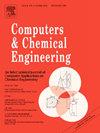Comprehensive crop allocation model: Balancing profitability, environmental impact, and occupational health
IF 3.9
2区 工程技术
Q2 COMPUTER SCIENCE, INTERDISCIPLINARY APPLICATIONS
引用次数: 0
Abstract
This paper presents an innovative mathematical optimization model, formulated as a Mixed-Integer Nonlinear Programming problem, for sustainable crop allocation across a set of available parcels. The model not only maximizes the economic benefits derived from crop sales but also optimizes the use of water and fertilizers, minimizes environmental impact, and assesses health and safety risks to workers using the Process Route Health Index, adapted from the chemical industry. The adaptation methodology is designed and presented step-by-step to highlight its applicability and relevance in the agricultural context. The integration of mass networks for the use, reuse, and regeneration of water and fertilizers allows for significant optimization of resources, reducing both operating costs and environmental waste. A case study involving the allocation of four crops across 12 parcels over three sowing cycles demonstrates the model's applicability under different scenarios, evaluating profits, Eco-indicator 95, water footprint, and occupational health. The results obtained demonstrate the model's ability to balance economic benefits with environmental sustainability and labor safety.
求助全文
约1分钟内获得全文
求助全文
来源期刊

Computers & Chemical Engineering
工程技术-工程:化工
CiteScore
8.70
自引率
14.00%
发文量
374
审稿时长
70 days
期刊介绍:
Computers & Chemical Engineering is primarily a journal of record for new developments in the application of computing and systems technology to chemical engineering problems.
 求助内容:
求助内容: 应助结果提醒方式:
应助结果提醒方式:


